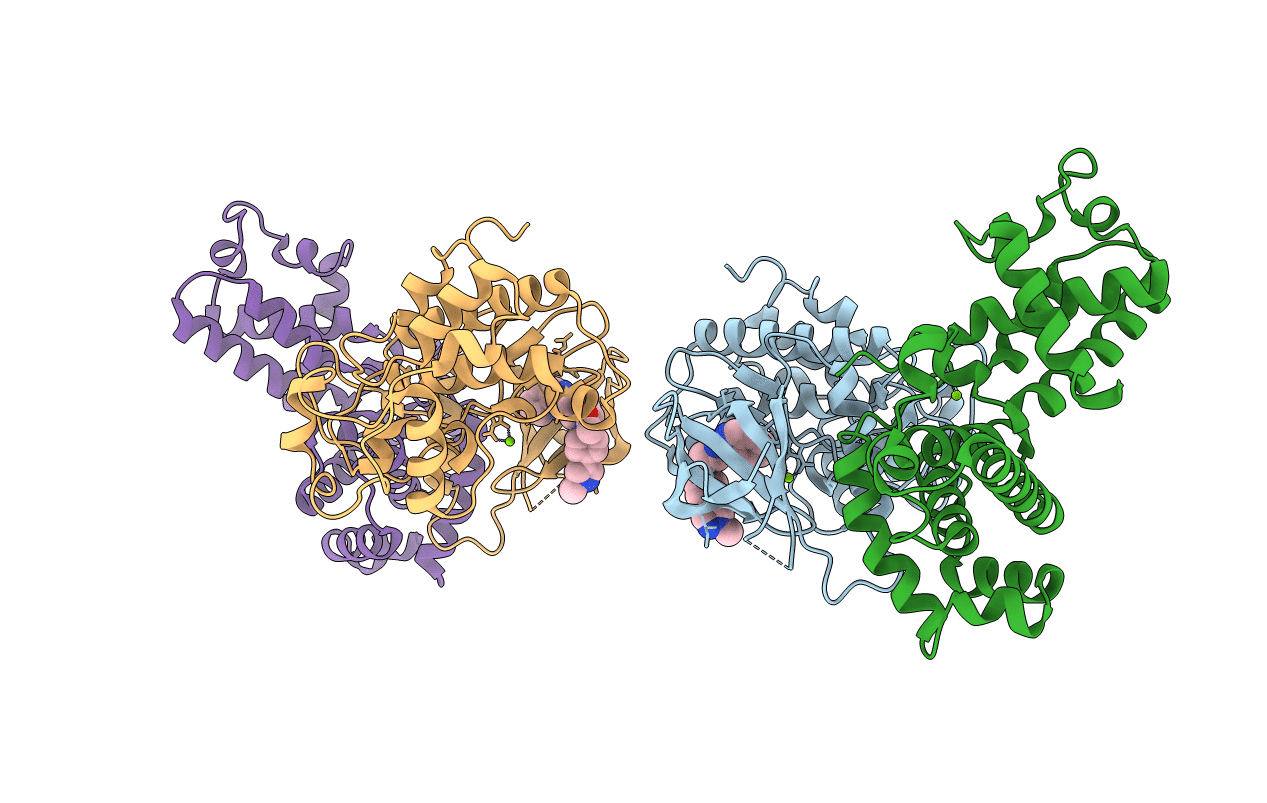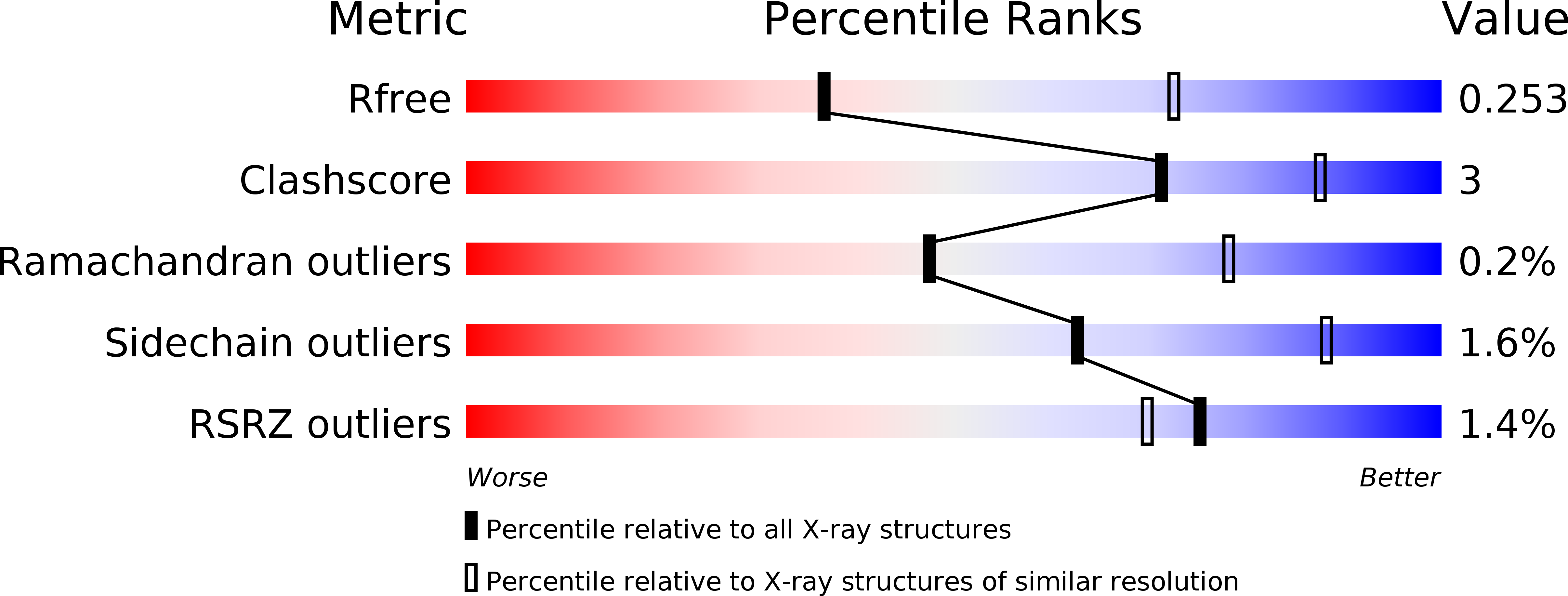
Deposition Date
2018-03-01
Release Date
2018-08-29
Last Version Date
2024-11-06
Entry Detail
PDB ID:
6CKX
Keywords:
Title:
Structure of CDK12/CycK in complex with a small molecule inhibitor N-(4-(1-methyl-1H-pyrazol-4-yl)phenyl)-N-((1r,4r)-4-(quinazolin-2-ylamino)cyclohexyl)acetamide
Biological Source:
Source Organism:
Homo sapiens (Taxon ID: 9606)
Host Organism:
Method Details:
Experimental Method:
Resolution:
2.80 Å
R-Value Free:
0.25
R-Value Work:
0.20
R-Value Observed:
0.21
Space Group:
P 21 21 21


